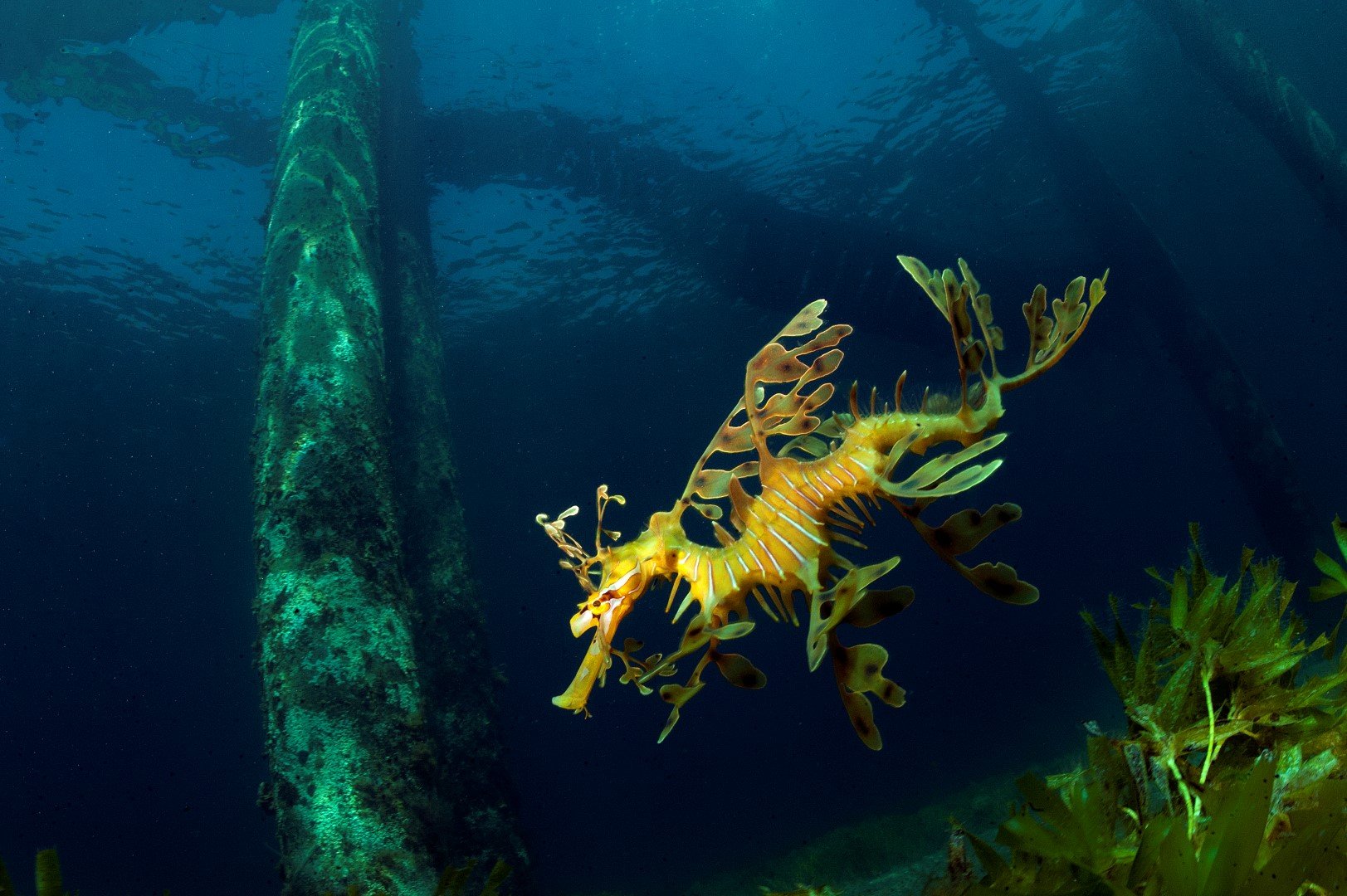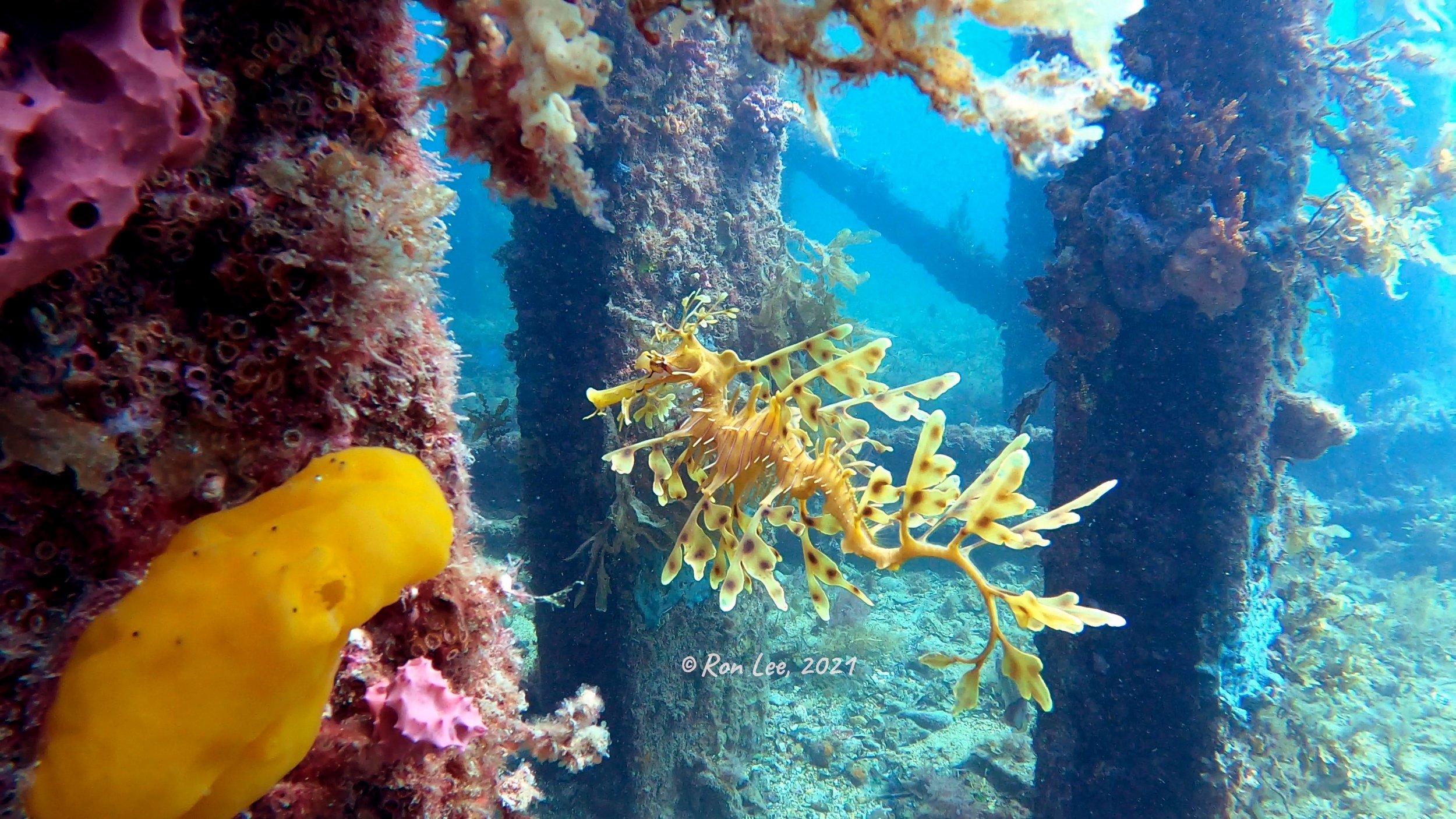dragon search south australia
Citizen Scientists Help Unlock Mysteries of Leafy Seadragon Life
Leafy detectives
A long-term citizen science program in South Australia is showing remarkable insights into the life history of the iconic Leafy Seadragon Phycodurus eques. Individual leafy seadragons (“leafies”) can be identified by their physical features, such as the shapes and markings on the head, snout and appendages. During the past decade, trained assessors have been using a suite of markers on thousands of seadragon photos, taken by around 100 divers in South Australia.
Dedicated devotion
Dragon Search South Australia project co-ordinator Janine Baker, a marine scientist and educator based in South Australia, is proud of the long-term commitment that divers have made to observing seadragons, following the Code of Conduct for interacting with them, and providing images to the community-based project.
The image set used for analysis so far, dates from 2011 to 2023. “Without long term observations, and without a long-term repository of seadragon photographs - which take divers a lot of time, effort and resources to gather - far less would be known about this amazing little fish, and how best to protect populations”.
“Seadragons are a very complex design,” says Baker. “There is no substitute for combining the first-hand knowledge of divers who have watched seadragons over hundreds of hours, with the trained eyes of assessors who have visually processed thousands of those divers’ images over time. We can track differences in appearance during breeding periods, physical injuries, change in leaf shape during growth to adulthood, and as the seadragon ages. Importantly, matching images accurately over time tells us a lot about the life history of the animals in those populations, their habitat associations, and threatening processes”.
“There is no substitute for combining the first-hand knowledge of divers”
Seadragon secrets
The long-term Dragon Search South Australia results are showing some of the following results, amongst others:
• some individual seadragons can stay in a “home base” for 10+ years;
• some leafy seadragons in the data set were 9, 10 and possibly 11 years old at last sighting. (Marine photographer, author and fish expert Rudie Kuiter reported during the 1980s that seadragons likely live for more than 10 years in the wild, and Dragon Search South Australia has been able to verify that with long-term data);
• some seadragons form life long bonds. Some form pairs with others, including male “brood buddies” that stay together for a decade or more;
• some males have more than one female partner over time;
• some males breed twice per year, each year;
• some travel offshore at least 300m from “home” (and likely further) to another reef or seagrass bed and then return to the same inshore location;
• leafy seadragons can grow new “leaves” after damage, but apparently not new appendages after loss.
Leafies in some SA locations brood eggs for less than 6 weeks
Snap & study
Citizen scientist Deb Aston has been visiting South Australia regularly since 2011, to photograph seadragons. Deb’s and other divers’ long-term data have helped Dragon Search SA piece together the puzzle of “dragon life” at two of the most popular dive spots in Australia for observing seadragons.
“Such a privilege to dive with and photograph these amazing fish. I was mesmerised from my first encounter in 2011. Their grace of movement and the complexity of form is fascinating, and I am excited to further the knowledge base to assist in preservation for future generations to enjoy".
- Deb Aston
“ I am excited to further the knowledge base to assist in preservation for future generations to enjoy”
Persistent pursuit
Another long-term diver - marine photographer and cinematographer Paul Macdonald - has been providing images from several locations in SA that span over a decade.
Paul’s images from Edithburgh, Rapid Bay and other locations have enabled information about long term site-association to be confirmed and documented. Not all seadragons remain in an area over the years though. Some are seen inshore for a short period as adults, leave the site, and then do not return. This migration away from place of birth is common in animal populations, to ensure genetic fitness.
“It’s been my honour and pleasure to be involved in leafy seadragon monitoring over the past decade. It’s so relaxing to dive with them as a passive observer, and film and photograph them. They are truly majestic creatures, so beautiful to watch. They are so delicate and fragile, and it is vitally important that our interactions with leafy seadragons are respectful of them and their environment”
– Paul Macdonald, marine photographer & cinematographer, and underwater photography instructor at downunderpix.
“It is vitally important that our interactions with leafy seadragons are respectful of them and their environment”
Ralph the Alpha Male
Some of the divers involved with the Dragon Search South Australia project are discovering new knowledge from their regular observations of seadragons underwater. Steve Simmons from Edithburgh has timed the gestation period of a male seadragon down to the day.
Steve’s records of a breeding male leafy seadragon called “Ralph”, and photos of other seadragons analysed by Baker and colleagues as part of this project, have shown that leafies in some SA locations brood the eggs for less than 6 weeks.
Steve considers that Ralph might be an “alpha male”, as there is evidence of successive female partners over the years he was recorded, and no other brooding males in the area where Ralph was “stationed”.
Now that Ralph has not been seen since winter of 2022, there is “breeding space” for another male to take his place. It is likely that seadragons remain in the area for long periods. A recent image from 2023 is currently being analysed, as it most closely resembles a leafy seadragon recorded in the same location in 2013. If the photos are a match, that would make the seadragon at least 11 years old.
Ron’s Rapid Bay Records
Ron Lee has been documenting the new generation of seadragons at Rapid Bay, and watching the old dragons disappear from the scene over time. Ron numbers each individual seadragon that he sights, videos and provides to Dragon Search SA. Ron’s records are compared visually with those from many other divers over time. Matches that are agreed upon by all data assessors are used in the analysis. Ron has noticed how similar the markers can be on seadragons from the same generation, including possible “siblings” from the same brood.
“Manning Clark spoke of Spirit Of Place - and the Leafy Seadragons of the southern reefs may be the essential epitome of the spirit of this place they've made their home. To the casual eye, they appear to be anything but what they really are. Their appearance, their abilities, their demeanour, their habits, their chosen habitats, all cloaked under a veneer of Move Along, Nothing To See Here. The ability of seadragons to remain under-estimated by everything around them except each other, their ostentatious lack of ostentatiousness, their resilience to extremes that are hostile to others (and their reluctance to flee from them), evokes a consuming desire to understand and connect with time-tested Nature, evolved and honed to perfectly Belong Here”
– Ron Lee.
“The ability of seadragons to remain under-estimated by everything around them except each other.. evokes a consuming desire to understand and connect.”
What is Dragon Search?
Dragon Search was started in South Australia in 1995 by Tony Flaherty, formerly of the Marine and Coastal Community Network (MCCN), supported by Threatened Species Network, and several other NGOs and government agencies
The program then expanded nationally across southern Australian States during the next decade, with the support of multiple NGOs, government agencies, dive organisations and other groups.
At the time, marine photography was a more specialised undertaking, so divers, snorkellers and beachcombers submitted a detailed form about each observation. The geo-referenced databases in each State were analysed over a 10-year period. Dragon Search data provided significant new information about distribution, breeding, habitat linkages, mass strandings and much else, across the national range of leafy and weedy seadragons.
In South Australia, the second phase of Dragon Search began in 2013, following concern about dwindling seadragon numbers at one of SA’s most popular dive spots where seadragons were resident. Seadragon photographs were taken by divers and provided to the project for visual analysis, along with data from numbered jetty piles. The identification part of the project built upon the pioneering work of Connolly and Melville, who used leafy seadragon snout markers to identify seadragons at West Island in SA during the late 1990s.
Dragon Search South Australia is unique, in that the marine community manages the project over the long term, based largely on volunteer effort, and supplemented in some years by small community grants. Following the pilot project at Rapid Bay from 2013-2018, the Dragon Search SA photo ID project expanded in 2019 to other locations across South Australia, and remains active each year.
Get involved
The Dragon Search program has been instrumental in furthering knowledge of seadragons over time, and participants are looking forward to continuing the long-term research. Janine is grateful to Landscape Boards in SA such as Green Adelaide for periodic support, and to all the divers, marine photographers and videographers who have helped the project stay alive and thrive over the past decade and beyond.
Green Adelaide has supported Dragon Search SA through a 2021-22 Grassroots Grant, and Hills and Fleurieu Landscape Board provided a 2022-23 Grassroots Grant.
For more information about Dragon Search South Australia, and how you can participate:
https://www.inaturalist.org/projects/dragon-search-south-australia
Email: jannebaker@bigpond.com













